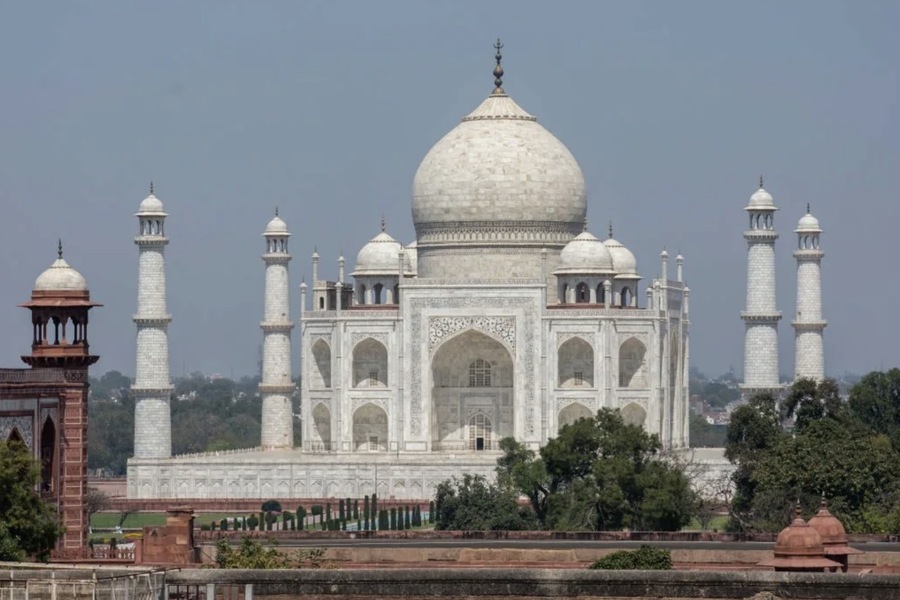While the United Arab Emirates (UAE) has become synonymous with luxurious beach holidays, opulent shopping malls, and futuristic skyscrapers, the nation also holds a wealth of historical monuments that trace a journey from ancient Bedouin roots to the modern, vibrant society it is today. The UAE offers visitors an array of attractions that can broadly be categorized into three types: modern architectural wonders, ancient sites, and natural attractions. Although natural monuments are sparse due to the UAE’s desert landscape, the country’s historical and cultural landmarks are a testament to its evolution, capturing the spirit of a region shaped by both the desert and the sea.
To immerse oneself in the history of the UAE, tourists can explore a range of heritage sites that include ancient forts, deserted towns, and archaeological discoveries. These sites provide fascinating glimpses into the UAE’s past, from its days as a land of pearl divers and Bedouin nomads to the nation’s more recent history as a hub of global trade and cultural exchange. Visitors interested in touring these sites can elevate their experience with luxury chauffeur services Dubai, allowing for comfortable, convenient, and personalized excursions to these historic destinations. Below, we delve into some of the UAE’s most significant historical monuments, each representing a unique chapter in the nation’s story.
Page Content
Heritage Village – Abu Dhabi
The Heritage Village in Abu Dhabi is a cultural and historical attraction that provides an interactive insight into the traditional way of life of the UAE’s early inhabitants. Located on the Corniche, this village is a reconstructed oasis settlement, complete with Bedouin tents, mud-brick homes, and exhibits on traditional crafts like pottery, metalworking, and weaving. Visitors can see artisans at work, practicing skills that have been passed down for generations. The Heritage Village not only preserves the UAE’s Bedouin past but also provides daily performances of traditional music and dance, enriching the visitor experience with a deeper appreciation for Emirati culture. The scenic location also offers a striking contrast between the traditional village and the modern Abu Dhabi skyline.

Al Jahili Fort – Al Ain
Al Jahili Fort is one of the largest and oldest forts in the UAE, located in the oasis city of Al Ain, a UNESCO World Heritage Site. Built in the 19th century, the fort initially served as a protective outpost and later became the residence of the ruling Al Nahyan family. Designed in traditional Emirati style, Al Jahili Fort has massive adobe walls, watchtowers, and a serene inner courtyard, making it an architectural masterpiece. Today, it houses exhibitions on local history, including a notable collection dedicated to the British adventurer and photographer Wilfred Thesiger, who documented the lives of the Bedouin tribes in the early 20th century. The fort’s unique architecture and storied past make it a popular destination for history enthusiasts and architecture lovers alike.
Al Jazeera Al Hamra Ghost Town – Ras Al Khaimah
Located in Ras Al Khaimah, Al Jazeera Al Hamra is an abandoned village that dates back to the early 20th century. Once a bustling town of pearl divers, fishermen, and traders, Al Jazeera Al Hamra was abandoned when the pearl industry declined with the invention of cultured pearls. Walking through this “ghost town,” visitors encounter well-preserved coral stone houses, a mosque, a fortress, and an open marketplace, all standing as silent witnesses to a bygone era. The village is particularly atmospheric due to its untouched appearance, and it serves as a unique destination for those interested in both history and ghost stories. The eerie charm of Al Jazeera Al Hamra is a stark reminder of the changes brought by economic shifts in the region, as well as the resilience of traditional architecture.
Sharjah Historical Museum
In the heart of Sharjah, the Sharjah Historical Museum resides within an 18th-century fortress. This museum houses a wide range of artifacts that trace the UAE’s history, from ancient tools and weapons to manuscripts, pottery, jewelry, and religious texts. The museum’s exhibits highlight Sharjah’s role as a prominent center of trade and culture throughout history. Visitors are introduced to the traditional lifestyles of the local people, including maritime trade, agriculture, and governance. The museum is a time capsule of Sharjah’s rich past, and its fortified architecture itself is a draw, offering insight into the traditional defensive structures used in the UAE.
Umm Al-Nar Archaeological Site – Abu Dhabi
The Umm Al-Nar archaeological site, located on an island off Abu Dhabi, dates back to the Bronze Age (2600–2000 BCE). This area was one of the earliest hubs of civilization in the UAE and provides crucial evidence of early settlements, trade networks, and burial practices. The discovery of tombs and relics, such as pottery and jewelry, paints a picture of a thriving society with connections to Mesopotamia, Persia, and the Indus Valley. Although public access to Umm Al-Nar is currently restricted, plans to classify it as a cultural landmark may soon allow tourists to explore its historical significance. This site underscores the UAE’s ancient roots and reflects the early societies that thrived along the Arabian Peninsula.
Al Bidya Mosque – Fujairah
In the Emirate of Fujairah lies Al Bidya Mosque, the oldest functioning mosque in the UAE. Built in 1446, the mosque is a marvel of traditional Islamic architecture, featuring a unique design with four domes supported by a single central pillar. Al Bidya is surrounded by other archaeological sites, enhancing its historical allure. As a place of worship still in use, the mosque bridges past and present, offering visitors a chance to connect with centuries-old spiritual practices. In 2012, the National Council of Tourism and Antiquities presented Al Bidya Mosque to UNESCO for consideration as a World Heritage Site, further acknowledging its cultural and historical importance.
Hili Archaeological Park – Al Ain
Located 10 kilometers outside Al Ain, Hili Archaeological Park is a remarkable Bronze Age site containing ruins of ancient villages, burial sites, and early irrigation systems. The park, established by Sheikh Zayed bin Sultan Al Nahyan in 1969, provides access to significant archaeological finds, including circular tombs and settlements dating back to 3000 BCE. The park also includes a lush garden, making it an inviting destination for both locals and tourists. Hili Archaeological Park exemplifies Al Ain’s deep history and importance in the development of early human civilization in the region.

Jebel Hafeet Tombs – Al Ain
The Jebel Hafeet Tombs are a collection of over 500 tombs located at the foot of Jebel Hafeet mountain. Dating back to around 3200-3000 BCE, these tombs offer some of the earliest evidence of human habitation in the UAE. Made from stone and arranged in circular formations, the tombs vary in size, with most measuring around two meters in diameter. Each tomb was likely used to bury multiple individuals, as indicated by the remains found within. The Jebel Hafeet Tombs provide insight into the ancient burial customs of the region and the early communities that settled in the Al Ain area. Their discovery has shed light on the ancient trade routes that linked the Arabian Peninsula to neighboring regions, highlighting Al Ain’s historical role as a cultural and economic crossroads.
Conclusion: UAE’s Rich Historical Heritage
The UAE’s historical sites offer a captivating journey through time, revealing the transformation of a nation that evolved from a desert-based economy into one of the world’s leading hubs of commerce and culture. While modern architectural wonders like the Burj Khalifa and Palm Jumeirah capture global attention, these historical monuments offer a glimpse into the UAE’s roots, highlighting its rich cultural heritage, ancient traditions, and the resilience of its people.
From Al Bidya Mosque’s enduring legacy of faith to the ghostly silence of Al Jazeera Al Hamra, each site holds a unique story, reflecting the diverse heritage of the UAE. With luxury chauffeur services in Dubai, visitors can experience these historical monuments in style, enjoying a comfortable and seamless journey to the UAE’s ancient sites. Exploring these landmarks enriches the traveler’s understanding of the UAE beyond its luxury shopping and sunny beaches, offering a deeper connection to the region’s past and its journey toward modernity. For anyone interested in the UAE’s history and culture, these historical monuments provide an invaluable experience that complements the country’s glamorous modern attractions.



